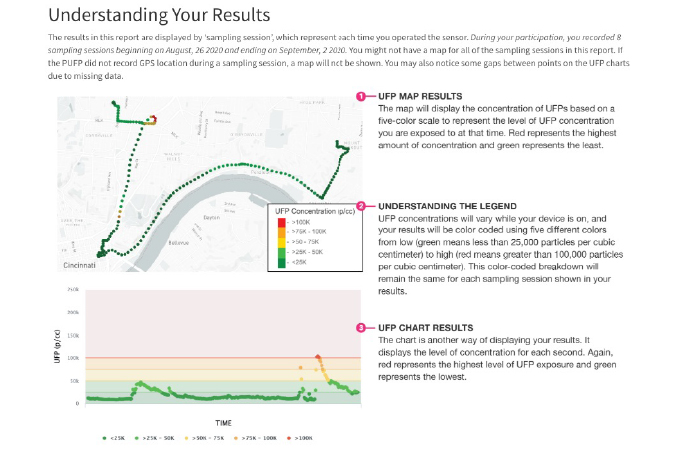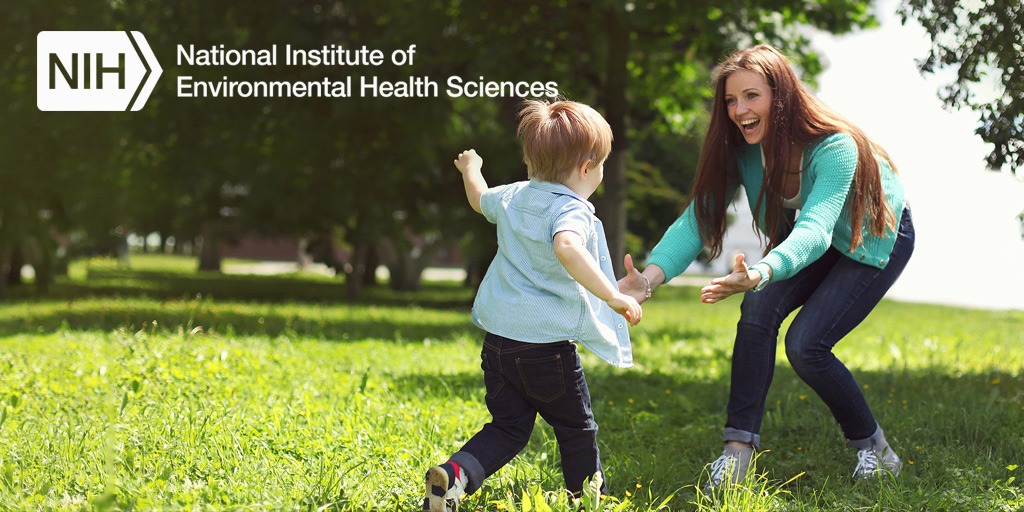Report-Back on Wearable Monitors Increases Air Pollution Awareness
Researchers from Cincinnati Children’s Hospital Medical Center and the University of Kentucky who worked on the NIEHS-funded Ecological Momentary Assessment and Personal Particle Exposure (EcoMAPPE) study, which measured adolescents’ personal exposure to air pollution through wearable monitors, wanted to ensure study participants received effective and actionable reports on their exposure. They did this by engaging with participants and their caregivers to design report-back materials. The design process is described in a March 2023 paper.
The researchers also surveyed participants and their caregivers about the perceived benefits of the report-back materials. After receiving the materials, participants and their caregivers reported increased knowledge, attitudes, and awareness about air pollution. A November 2023 paper describes the survey process and results.
“Most prior studies of report-back materials have focused on chemical or other biomonitoring data. Our study is perhaps the first to look at participant perceptions on benefits of wearable air pollution monitoring report-back materials,” stated Patrick Ryan, Ph.D. “Effectively co-designing report-back materials with study participants to ensure the information is communicated in an understandable and usable way can benefit participants in knowing where and when their exposure to air pollution occurs. We also saw evidence that it increased participants’ knowledge and awareness of air pollution in general.”
Students walk together outdoors. School-age participants in the EcoMAPPE study wore air monitoring devices to measure air pollution throughout the day. (Photo courtesy of George Pak of Pexels)
Engaging Study Participants and Parents to Design Report-Back Materials
Wearable air monitors can provide actionable information to community residents because they directly measure where and when a wearer was exposed to air pollution. It is important to report these results back to users in a timely, effective, and easily understandable way so they can act on their personal results. With this in mind, EcoMAPPE researchers hosted focus groups in which participants, ages 13 – 17, who had previously worn personal air monitors provided feedback on the design of report-back materials. Researchers also engaged participants’ caregivers in a separate focus group.
Eight EcoMAPPE participants and their caregivers provided feedback in the focus groups. In both the adolescent and caregiver focus groups, participants described the EcoMAPPE study in their own words so researchers could learn how a lay audience would understand the study. These words and phrases were later incorporated into the language used in the report-back materials. Participants also reviewed and gave feedback on prototypes of report-back materials developed by the researchers. Prototypes were in an electronic format and included sample graphs of results and information about air pollution.

A screen shot of part of the report-back materials showing a prototype of air pollution measurement graphs and explanations for users. (Photo courtesy of Pat Ryan)
The adolescent focus group members helped develop the prototypes by selecting components they liked best. A prominent portion of the reports included maps showing where wearable devices recorded participants’ locations and corresponding air pollution exposure levels. To show how they would want the map to look, each focus group participant also drew a sample map that displayed air pollution results. They also added an explanation of the results in their own words. Participants then reviewed all prototypes and drawings and selected which components they liked best.
Researchers made draft report-back documents based on both groups’ feedback, including input on the materials’ presentation, content, readability, and usability. The final report-back document included:
- A comparison of participants’ median exposure compared to the entire study population.
- A guide to understanding the personal air monitor and results.
- A visualization of personal measurement data using an interactive map with data on days and times of exposures.
- An introduction to the materials, including an overview of air pollutants.
- Information on sources of air pollutants, potential health risks, and strategies to reduce exposure.
“Engaging with the focus groups members was a critical step to help us design effective report-back materials,” reflected Ryan. “Doing so made sure the reports captured results in a way that was meaningful to the participants.”
Surveying Study Participants on Changes in Knowledge, Attitudes, and Awareness
All EcoMAPPE participants were invited to receive the report-back materials and participate in surveys to assess their knowledge, attitudes, and awareness of air pollution before and after receiving the materials. Of the original 118 adolescent EcoMAPPE participants, 37 completed the surveys. Additionally, 68 caregivers completed the surveys.
The survey results revealed positive increases in study participants’ and caregivers’ awareness of air pollution, and greater confidence among study participants in their ability to reduce their exposure to air pollutants. Study participants expressed excitement about using air monitors and contributing to science. The survey results also showed increased knowledge about air pollutants among caregivers but not among study participants.
“Findings showed that well-designed, co-developed, culturally appropriate report-back materials may increase study participants’ awareness of how, when, and where they are exposed to high air pollution levels,” stated Ryan. “From this research, we think personal report-back materials could be a potential intervention to reduce exposure to air pollution but would need to examine this further.”
Source link
www.niehs.nih.gov


